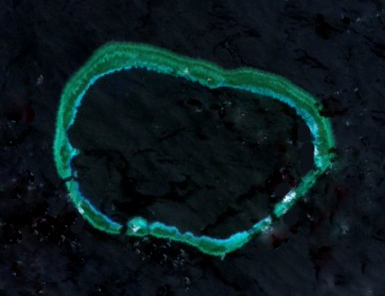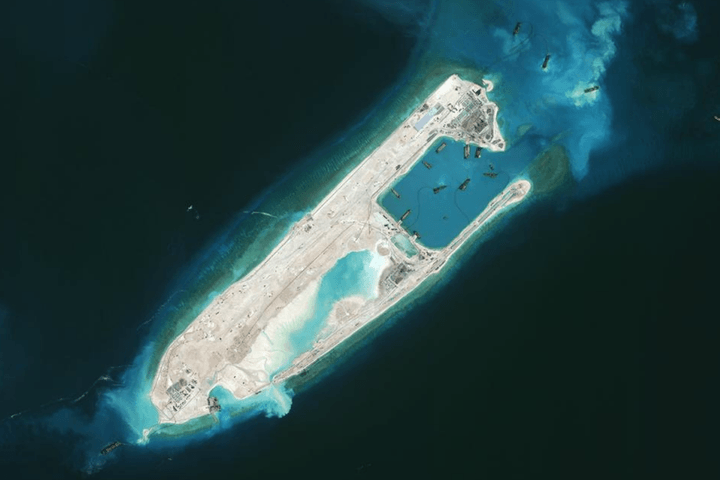How does China build artificial islands in it’s South China Sea
In 2015, China began pumping sand onto Mischief Reef in the Spratly Island group of the South China Sea. At that time, Its reef plate is still underwater, only the reefs around it will be exposed at low tide. But just eight months later, the Chinese built the largest island in the South China Sea with an area of 5.66 square kilometers, which is equivalent to 4 capital international airports.
What used to be partially submerged coral features are now fully fledged islands, hosting buildings, ports, and runways. Similarly, the Palm Island in Dubai, Kansai International Airport in Japan, and the entrance to the subsea tunnel of the Hong Kong-Zhuhai-Macao Bridge are artificial islands. How are these islands constructed? And how much does it cost to build an artificial island?
How to build an artificial island?
For those wondering what an artificial island is made of, the answer is the same thing most islands are made of: sand. The process for building these islands is remarkably simple and straightforward, although the technology involved is imposing.
The essence of building an artificial island is to fill the sea with soil or sand, and there are four main steps in the island-building process.
The first requirement for an island is a base to build on. To form the outline of the island, traditionally, dredgers are used to dig out soft mud on the bottom of the sea, then fill it with gravel, squeeze the foundation tightly and firmly by gravity, and then pile the seawall with stones or sand bags. While a naturally formed islands don’t float in the water, rather, an island is simply the top, visible part of a landmass that is mostly underwater.
To construct its artificial islands, China builds atop already existing, islands, rocks, stones, and even coral reefs. Building an island that can support airstrips and other military installations requires a lot of sand, however. To gather it, China uses a fleet of dredgers, ships designed to pick up and move materials from the seafloor. These dredgers use large tubes with cutting attachments at the end to grind up material on the seafloor and suck it up. From there, the material is carried through pipes or hoses and dumped on top of reefs, rocks, and other existing formations.
The second step is filling the island body, usually by filling the cofferdam with sand.
However, the island is built in a distant place in the South China Sea and it takes time and energy to transport sand from the land, so the island body must be filled with materials locally.
So China decided to use a cutter suction dredger. When working, a steel pile at the stern of the ship will be inserted into the seafloor to fix the ship, then the traverse anchors will be thrown in order on both sides, and then the reamer will be placed on the seafloor, and the reamer will be swung from side to side by pulling the cable Dredging, and the use of two steel piles at the stern alternately inserted into the sea floor will allow the vessel to slowly advance and continue to dredge.
The mud dug by the reamer will be sucked in by the mud pump inside the ship, and finally the sand will be sprayed on the artificial island through the mud discharge pipe, which is called “blown filling”. China’s largest cutter suction vessel “Tianyu” can dredge 6,000 cubic meters per hour and can fill 3 standard swimming pools.
However, the silt filled by the island body has a high water content and a soft texture, which requires foundation treatment.
Shortly to say, the drainage pipe with holes in the outer wall is driven into the sand, and the gravity squeeze of the sand allows the water to seep into the pipe and then pump out of the island, so that the sand will be consolidated and consolidated. And this will take about 4 to 5 months.
Once the islands are large and stable enough, China can then lay down cement and build structures on them. The rubble is piled into a slope, and a twisted block is placed to form a bank to prevent the waves from eroding the artificial island. The construction of the entire artificial island takes about 7 months.
The extent of the changes can be striking. For example, below is Fiery Cross Reef before China build it.

Here is the Reef looks like after China converted it into an island.

What’s the point?
By transforming reefs and cays into military installations, China is extending its military capabilities in the South China Sea. Airstrips, radar arrays, and all such buildings give China the ability to project force throughout the region.
Also, it is reported that the South China Sea is one of the busiest trade routes in the world. According to information gathered by the council on Foreign Relations, more than $5.3 trillion worth of shipping travels through the sea each year; $1.2 trillion of this trade belongs to the United States.
And beyond its importance as a trade route, the South China Sea may also contain bountiful resources beneath the surface. The U.S. Energy Information Administration (EIA) estimates that there are 11 billion barrels of oil in the South China Sea, as well as 190 trillion cubic feet of natural gas. As East Asia continues to grow in importance, these resources — and who gets to control them — will become more important.
